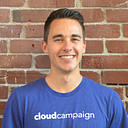When starting a company, it’s easy to get lost in the trenches and focus so much on the day to day rollercoaster ride that you forget to look back and see how far you’ve come.
However, it’s hard to not take a step back and assess around the holidays as I typically get bombarded with family members somewhat apprehensively asking how the business is going.
For the first time, I’ve been able to say it’s going well.
A lot has changed in the past year. I brought on a co-founder, we found product-market fit, and we became ramen profitable. I can proudly say, for the first time in 1.5 years, I’m taking a salary starting next week.
There’s still a long road ahead, but I’m incredibly proud of what we’ve accomplished.
In the past 12 months, the business went from generating $250 in MRR and struggling to get a foothold to generating $6.2k in MRR and growing rapidly.
I’ll try to do my best to map out how we got to where we are today.
Know Your Weaknesses
The smartest decision I’ve made as CEO was bringing on a co-founder.
It was evident from the early sales calls and product demos that I lack many of the sales and interpersonal skills needed for a B2B company.
Luckily I met Ross. Ross’ business acumen and sales experience compliments my technical background to form a symbiotic relationship.
The dichotomy of our skill sets provides a clear separation of tasks, which gives both of us full autonomy without having to worry about stepping on the other person’s toes.
Luckily, our goals for the company are aligned and we have similar risk tolerance which I think is crucial for any founding team.
Finding Product-Market Fit
Right around the time Ross joined as COO, we saw early glimpses of product market fit. This was about 9 months after starting the company.
Following the Lean Startup methodology, I tried selling from day 1. As soon as the MVP was live, I tried getting early subscribers.
I didn’t get the response I was hoping for. The issue was we entered an extremely crowded market which resulted in customers having predefined expectations for feature set, price, and usability.
The feature set for our target customer (marketing agencies) would take about 9 months to build out. However, early feedback from our potential customers was necessary to help shape the product so we started selling long before the product was ever worthy of purchasing.
Around this 9 month mark, we started adding more of the agency features and we started to notice a shift in the feedback we would receive during demos.
We took note of what features caused the “ah-ha” moment for agencies and incorporated that into our marketing. Any time a prospect mentioned a feature request, we would incorporate that into our product roadmap.
Slowly over the next 6 months or so, we would get fewer feature requests and more “ah ha” moments during demos. It was clear we were on to something.
It was time to increase our advertising and begin growing the business. A couple of months ago, we increased our ad spend to about $3000 a month, which has resulted in 200 to 300 new leads each month.
Getting to Profitability
If your company is bootstrapped (no outside funding), profit is arguably your most important metric.
Profit fuels growth. Profit funds new hires. Profit keeps the business alive.
Profit is compromised of what you earn minus what you spend.
We have meticulously focused on both to achieve [ramen] profitability.
By keeping our spend low, we can stretch our revenue further. This means limiting the services we pay for and building for efficiency to keep server costs low.
We also closely monitor our acquisition channels to ensure our LTV is at least 2.5x our CAC. For the last two months, our LTV was 17.4x our CAC.
Since finding a lucrative acquisition channel, we have continued to increase our spend to fuel growth.
The Next 6 Months
With our MRR growing two to three thousand a month, we can continue to increase our ad spend and flirt with the break-even line. In theory, we should be able to increase our revenue by a larger amount each month.
Assuming we don’t take any external funding, we’re hoping to reach $25k MRR by July. Subscribe for updates on the journey.
